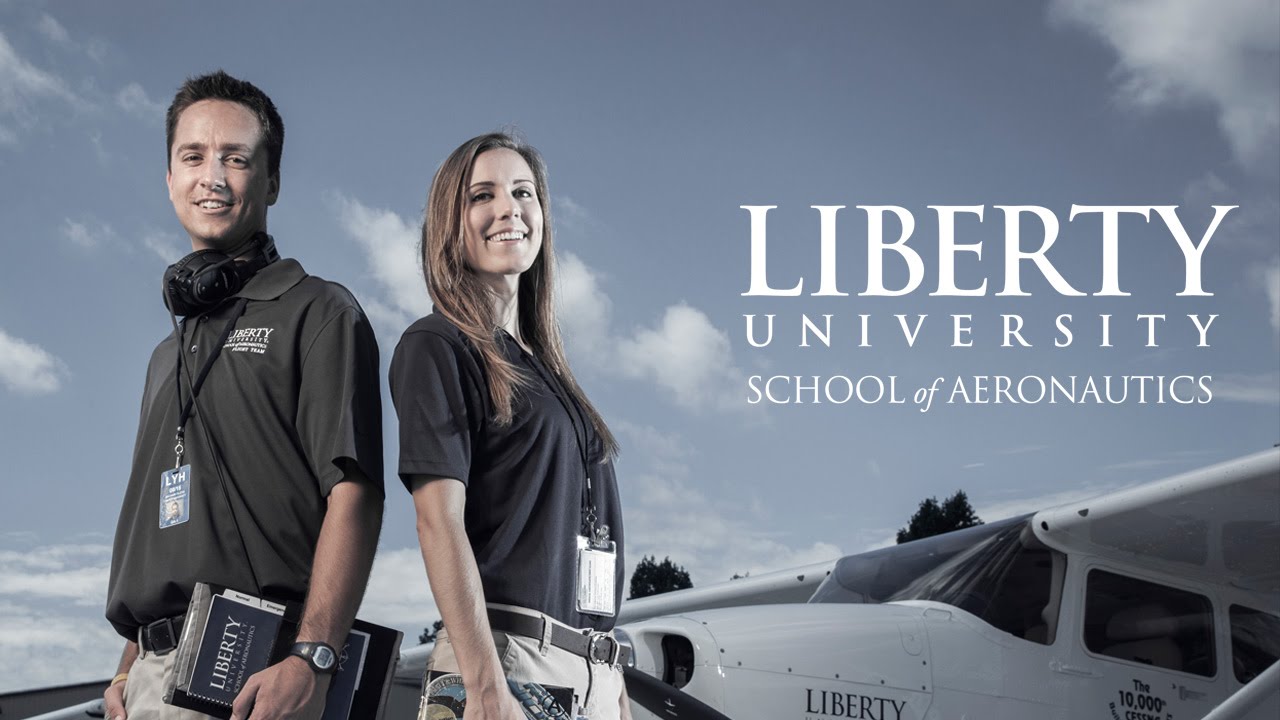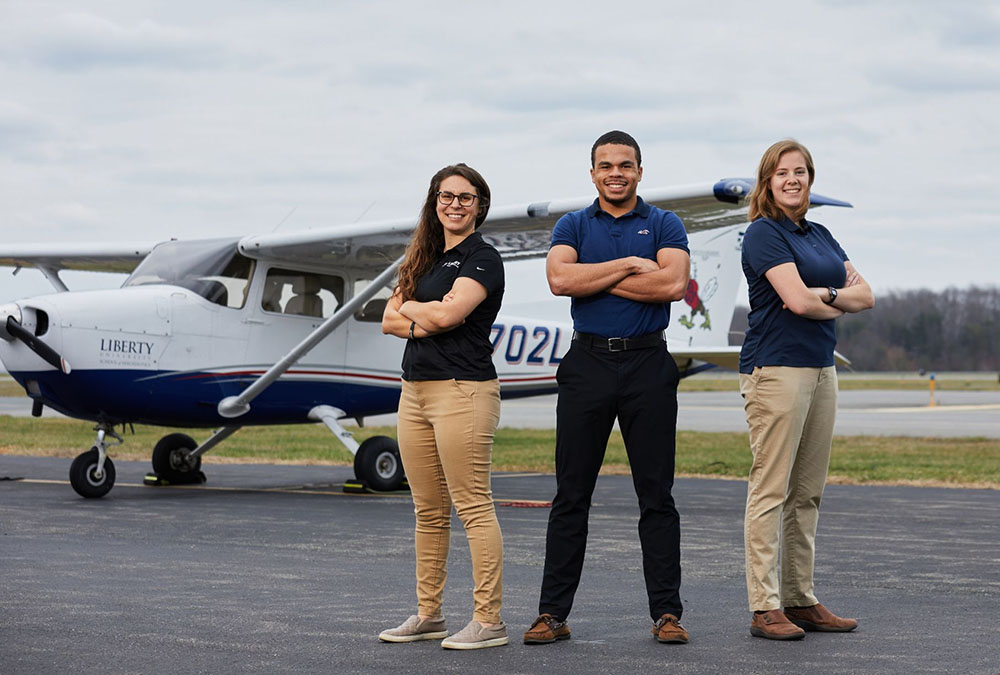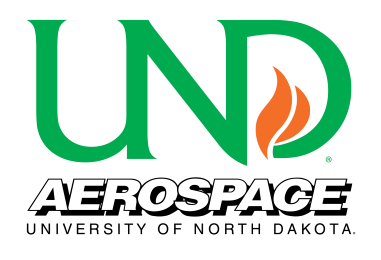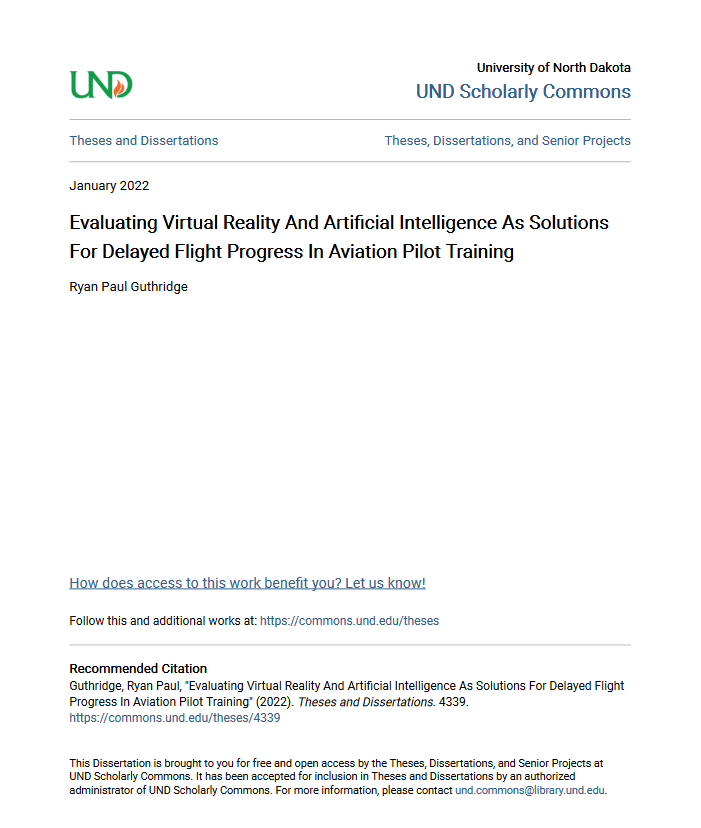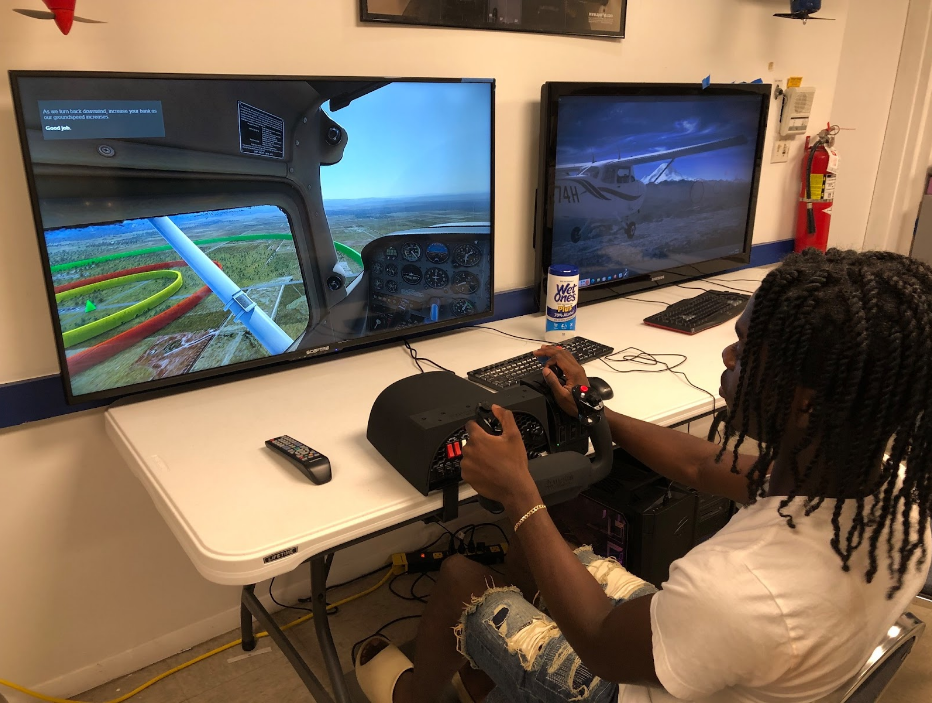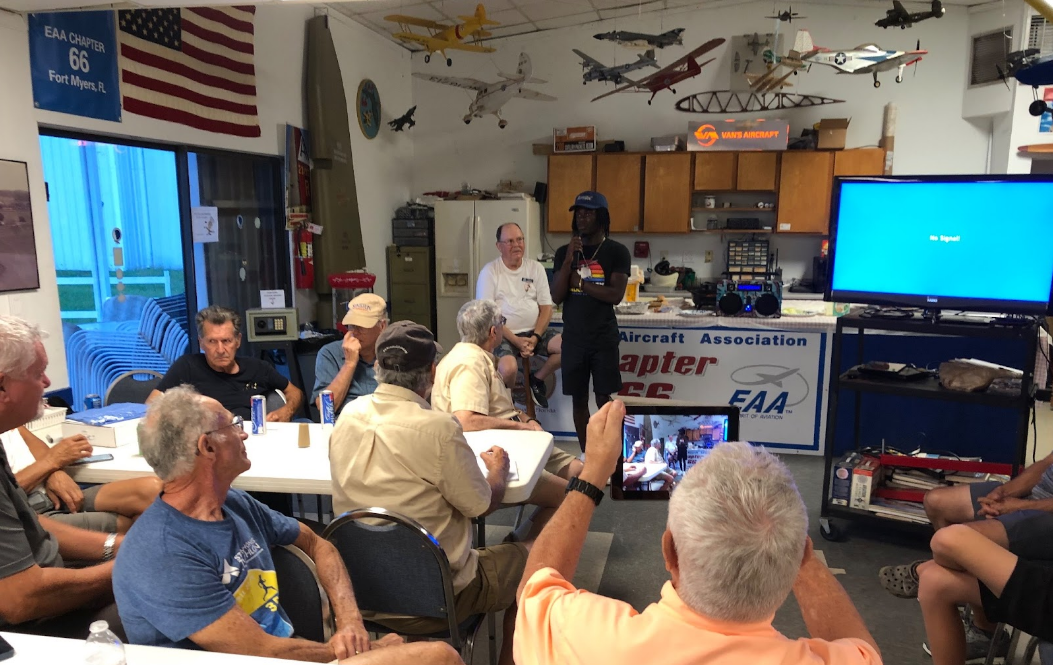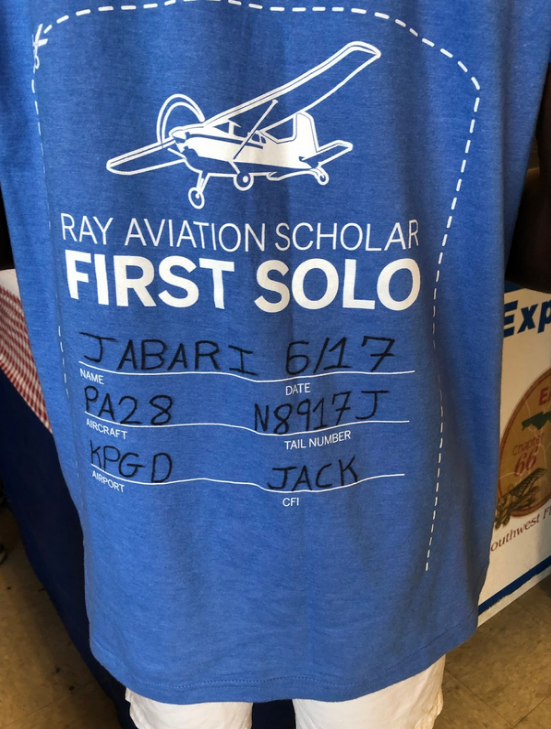Case Studies
Case Study 1: Liberty University
Liberty University is having tremendous success with TakeFlight, training 200 on-campus flight students each year. Students master skills at their own pace and style without a flight instructor present.
“TakeFlight is amazing because the artificial intelligence instructor is in there actually teaching you how to fly — how to start, how to taxi, how to take off, how to circle, climb, descend, turn — with no human interaction,” he said. “As you are flying, it’s talking to you, telling you what to do, giving you feedback, and you go through multiple lessons and you get graded on it based on the FAA standards. Those are no-cost, self-paced learning tools. Students can come in here and practice as much as they want to get good at it, and they do this before they ever hit a big sim, a flight instructor, or the airplane.”
Kevin “sling” Martin CFI, CFII, S-MR
Director, Technology and Innovations | Adjunct Professor
Liberty University School of Aeronautics
Case Study 2: University of North Dakota Research
A recent study from the University of North Dakota using our Private Pilot courseware proves the efficacy of AI-based versus human flight instructor. Notable quotes from that study include:
“When considering the transfer effectiveness of an artificial intelligence-based simulator pre-training program on the total flight hours realized by initial student pilots in the Private Pilot curriculum, the TER was 0.34 for student pilots who conducted simulator pre-training. This ratio indicates that for each 10 hours of simulator pretraining, flight training time is reduced by 3.4 hours, on average.”
and
“The results of the study showed that students who conducted the pre-training lessons (1) took fewer calendar days to complete the pre-solo block of Private Pilot training, (2) required fewer hours in the airplane during the pre-solo block of Private Pilot training, and (3) required fewer ground training hours during the pre-solo block of Private Pilot training. The findings of this study show a comparable level of transfer effectiveness in utilizing a human flight instructor versus using an artificial intelligence-based flight instructor. This is significant when considering methods to supplement reduced flight instructor staffing, while still providing a quantifiable benefit to the student pilots in the flight training organization.”
You can view the research here, and find information specific to TakeFlight in Study 3: Quantifying The Transfer Effectiveness Of An Artificial Intelligence-Based Simulator Pre-Training Program For Student Pilots, page 74.
Case Study 3: EAA Chapter 66 Ray Scholar, Jabari Brown
EAA Chapter 66 in Ft. Myers Florida has graduated their second Ray Scholar at 40 hours Private Pilot completion in 2 years. Jabari Brown, this year’s Ray Scholar, completed his check ride at Flight Fast Track in Punta Gorda after only 4 weeks and 40 hours of training. This is a great accomplishment when the national average is 60-80 hours. Here’s what Jabari tells us:
“I used my TakeFlight Academy subscription regularly before I received my Ray Scholarship. It was a huge part of my developing understanding of flight maneuvers and procedures, and precise control of the airplane. EAA 66 generously loaned me a very nice portable PC sim for my TakeFlight, work which I continued even after starting with lessons aloft, and am continuing even after receiving my license. So, when I began at Flight Fast Track, I already had a significant understanding of how to fly and was very confident. In fact, my instructor didn’t even touch the controls of the airplane for the first 15 hours. I got my instructor’s formal endorsement for my check ride at the minimum 40 hours but I’m certain I would have passed at 25. I had to wait weeks until a Designated Pilot Examiner was available, so continued training to keep current. Even so, I consider myself having gotten my completion at 40 hours. My thanks to the Ray Foundation, TakeFlight, and EAA 66 Ft.Myers and all their great mentor pilots who’ve guided me in getting my PPL in the FAA minimum, and within the $11,000 Ray Scholarship.”
Jabari had roughly 10 hours of informal flying experience and had worked on a small simulator at home. Fortunately, EAA 66 already had a youth flight training program. 3 years ago EAA 66 started with a member-donated simulator running TakeFlight Academy and have recently added 3 more simulators thanks to a Ray Foundation grant. They hold Thursday night flight training sessions every week using TakeFlight Academy. Jabari was both a regular participant and has also been assisting new students. Every trainee in the program gets their own TakeFlight Academy subscription, also thanks to the Ray Foundation.
“We are thrilled that we’ve been able to provide these capabilities to Jabari and our other aviation hopefuls” said Steve Gagnon, President of EAA 66 Ft.Myers. “Jabari is heading to American Airlines flight training in Dallas, we’re sure he’s going to make them as proud as he’s made us.”
Today, a dozen young people train with TakeFlight at EAA 66’s Thursday night sessions. They already have 3 students competing for next years Ray Scholarship.
TakeFlight and Ray Foundation grants are transforming EAA chapters, making it possible to create a full pipeline of quality student pilots.
Contact us to learn more!

